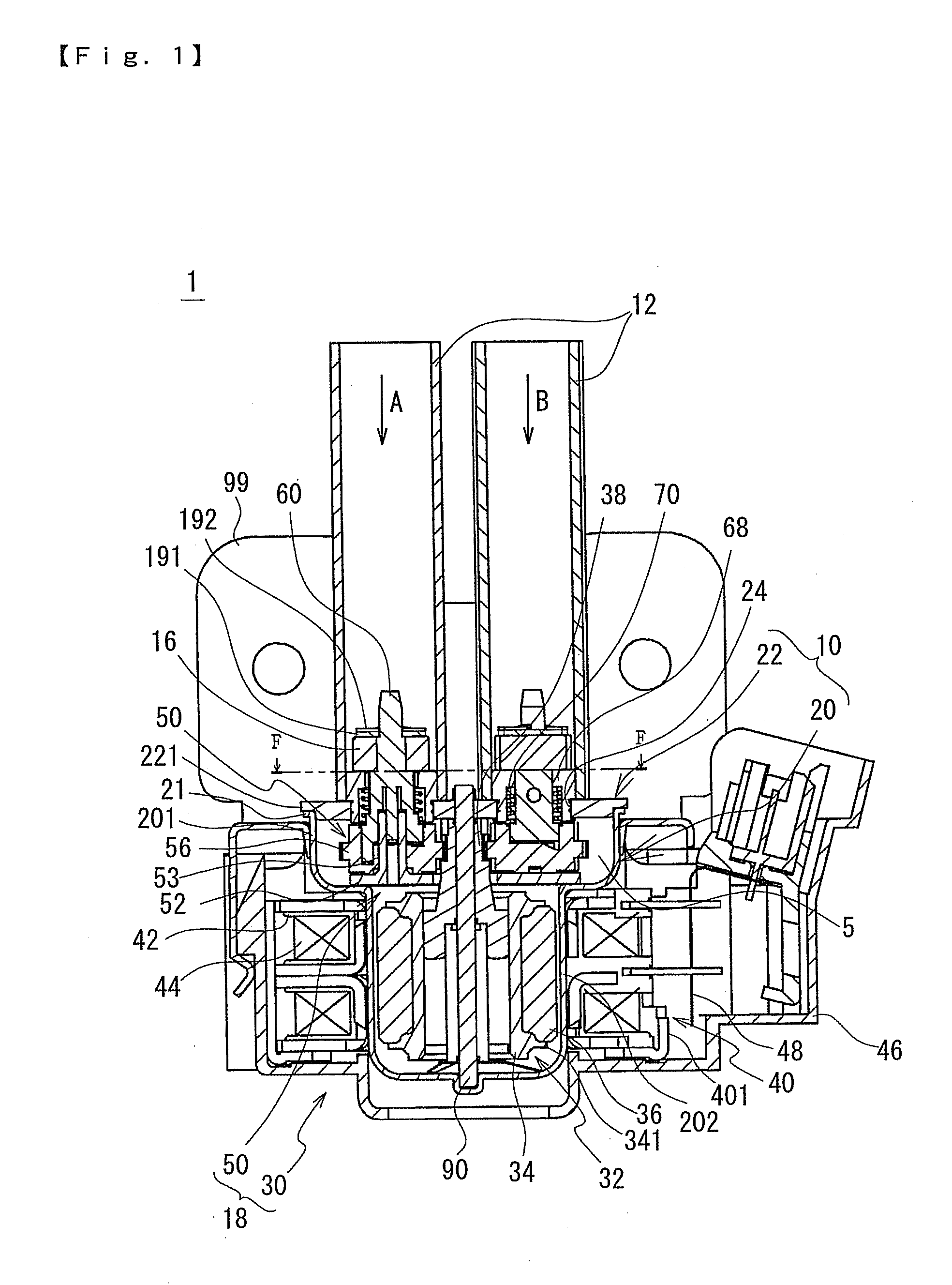Valve element opening/closing device
a valve element and opening/closing technology, which is applied in the field of valve element opening/closing devices, can solve the problems of increasing the size and manufacturing cost and the size of the valve element opening/closing device and its manufacturing cost, and achieves the effect of simple structur
- Summary
- Abstract
- Description
- Claims
- Application Information
AI Technical Summary
Benefits of technology
Problems solved by technology
Method used
Image
Examples
first embodiment
[0032]An embodiment of the present invention will be described in detail below with reference to the accompanying drawings. FIG. 1 is a cross-sectional view showing a valve element opening / closing device 1 in accordance with the present invention and FIG. 2 is its perspective outward appearance view.
[0033]The valve element opening / closing device 1 is a so-called “2-IN / 1-OUT” valve which is capable of selectively outputting, e.g. passing either one of two kinds of fluids, e.g., two kinds of fluids whose temperatures are different from each other, which are inputted or flown into the device. In this embodiment, structural components for controlling fluid “A” inputted into the device have the same structure as those for controlling fluid “B”. Therefore, when it is required to be distinguished from each other, the notational symbol “a” is added to the structural components for controlling the fluid “A” and the notational symbol “b” is added to the structural components for controlling t...
second embodiment
[0075]As described above, the valve element opening / closing device in accordance with the second embodiment provides eight modes as open / close states of the valve elements 16a through 16c. In these modes, when the modes where either one of the valve elements 16a through 16c is set to be in the open state are appropriately changed, in other words, when the mode (2. open-close-close), the mode (4. close-open-close) and the mode (6. close-close-open) are appropriately changed, either one of three fluids to be inputted is selectively passed.
[0076]According to this valve element opening / closing device, in three kinds of fluid to be inputted into the valve element opening / closing device, when the modes where two or more kinds of fluid are mixed and passed are appropriately changed, in other words, when the mode (3. open-open-close), the mode (5. close-open-open), the mode (7. open-close-open), and the mode (8. open-open-open) are appropriately changed, a temperature of fluid to be outputt...
PUM
 Login to View More
Login to View More Abstract
Description
Claims
Application Information
 Login to View More
Login to View More - R&D
- Intellectual Property
- Life Sciences
- Materials
- Tech Scout
- Unparalleled Data Quality
- Higher Quality Content
- 60% Fewer Hallucinations
Browse by: Latest US Patents, China's latest patents, Technical Efficacy Thesaurus, Application Domain, Technology Topic, Popular Technical Reports.
© 2025 PatSnap. All rights reserved.Legal|Privacy policy|Modern Slavery Act Transparency Statement|Sitemap|About US| Contact US: help@patsnap.com



